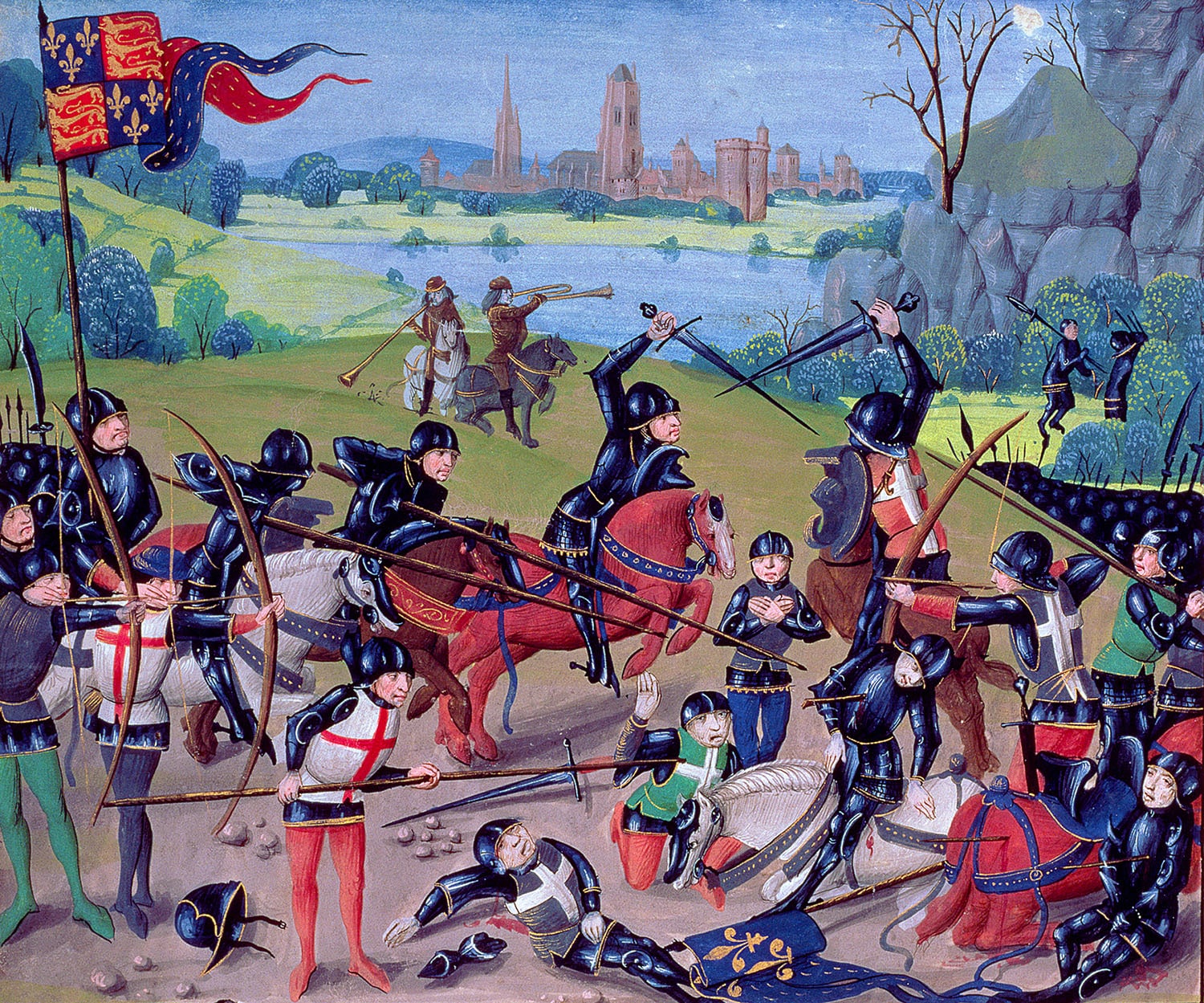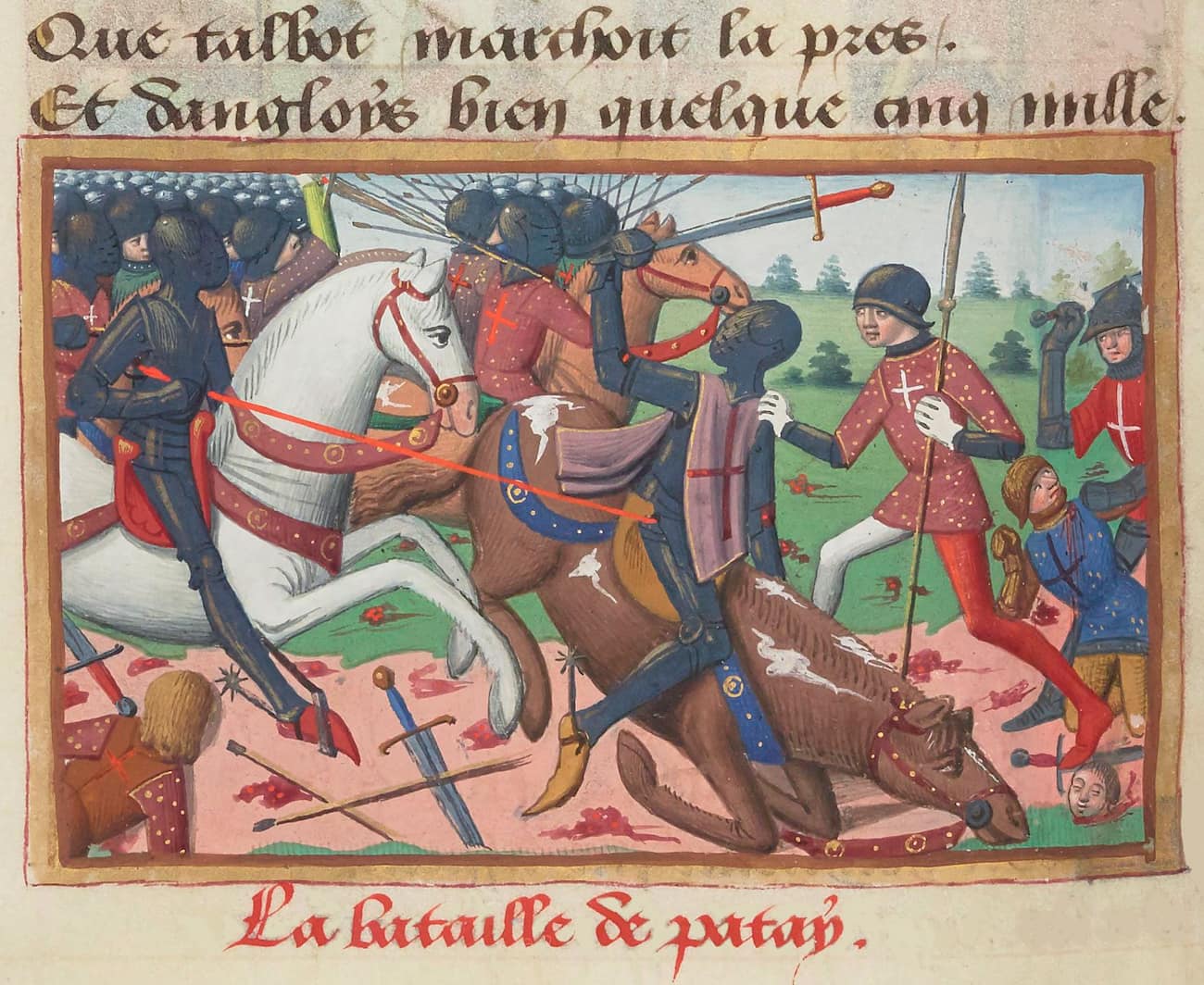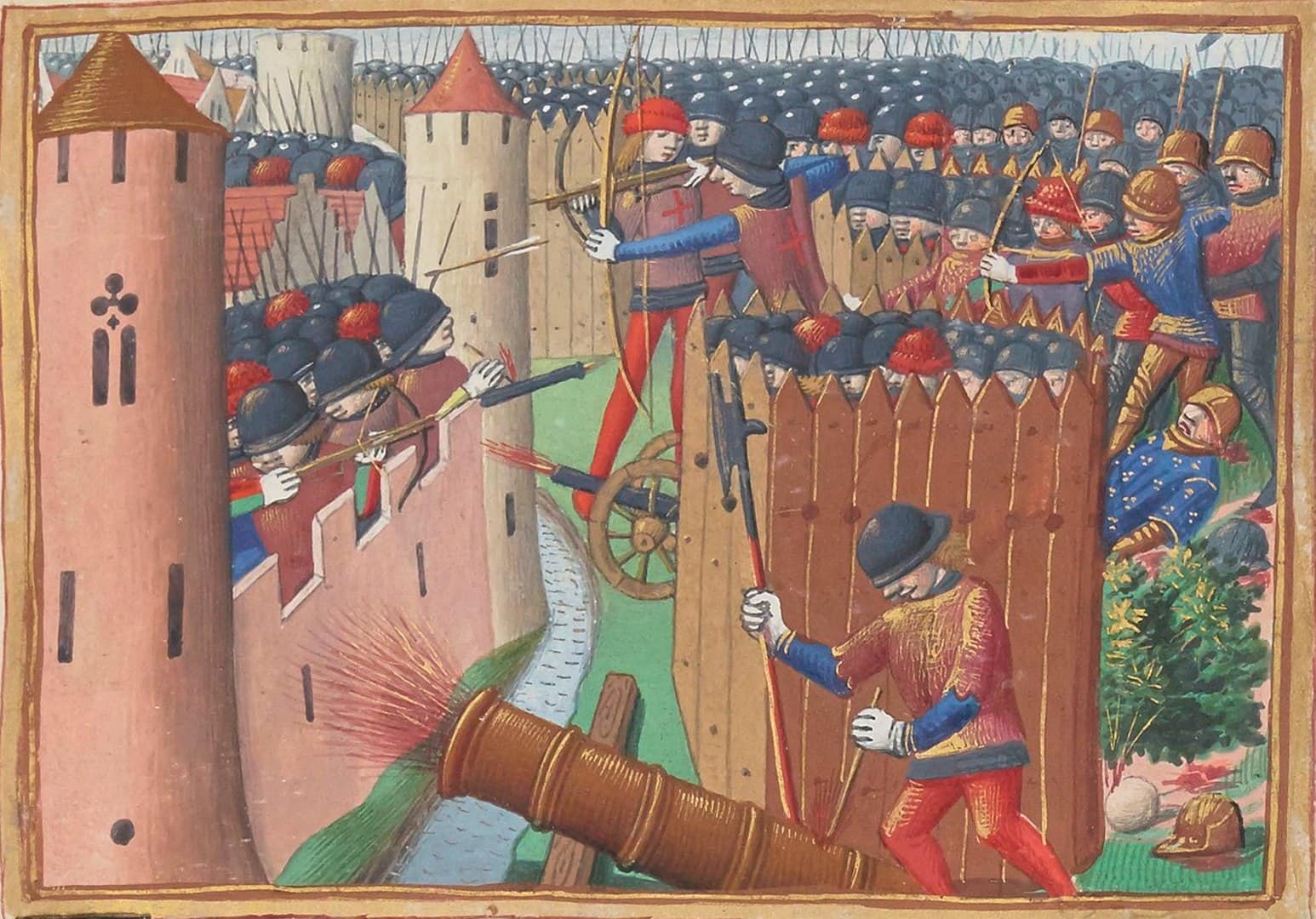Ascending to the throne in 1413, King Henry V of the Lancaster dynasty was the man behind the Battle of Agincourt. Being particularly bellicose, he found a pretext to land in France: he demanded control of virtually the entire Atlantic coast and the hand of Catherine, King Charles VI’s young daughter.
To top it off, he demanded a very high dowry for this marriage…
France declined, giving Henry V a good reason to invade France: on August 13, 1415, a fleet of nearly 700 English ships appeared off the Norman coast, carrying some 12,000 fighters and Henry V, who aimed to reach Paris. Before that, the English troops would besiege the town of Harfleur, which controlled the Seine estuary.
5 weeks of siege at Harfleur
The Norman town, which happened to be the most important navigation port on the Seine, would endure a siege lasting just over a month, while its inhabitants resisted as best they could, despite the absence of reinforcements. In the English camp, many men contracted dysentery.
The Normans suffered from a lack of supplies and struggled to hold on, which led to the negotiation of a truce on September 18. Despite Harfleur’s surrender, Henry V was frustrated: he had been informed of the presence of a royal army in Rouen, which forced him to retreat towards Calais, an English city since 1347.
12,000 to 15,000 French fighters
While the English soldiers and Henry V left Harfleur on October 7 or 8, 1415, the army that Charles VI had managed to gather launched an offensive. The French would harass the enemy, with the vanguard attacking the retreating English troops almost daily. The English army was weakened, and the 8,500 men who had survived hunger and disease struggled to cross the Somme.
The chase between the English and French armies ended on October 24, 1415, when the 12,000 to 15,000 French fighters came to cut off Henry V’s route between the Tramecourt wood and the village of Agincourt. However, it was late, and the armies would therefore wait until early morning to face each other.
Less than 24 hours of battle
It was thus the next morning, October 25, 1415, that the battle would begin: after failed negotiations, Henry V advanced his army. The English archers released their arrows, while on the opposite side, French cavalrymen charged. The problem: while the French army consisted of heavy cavalry, the English were equipped with very long-range bows. The French soldiers, who were furthermore bogged down in muddy terrain, tried to advance on foot, but the English slaughtered them one after another, or took them prisoner.
The French army, led by Charles I d’Albret, was held in check. Many soldiers were taken prisoner by the English in the Tramecourt wood before midday. In the afternoon, when the French appeared to be preparing a new attack, the English executed some of their prisoners, causing many French fighters to flee.
Nearly 1000 deaths on the French side
According to the Agincourt 1415 Center, nearly 1000 French fighters would die during the confrontation. Seven Princes of royal blood were killed or captured, while more than 300 French nobles were taken prisoner. The Battle of Agincourt would decimate entire families of French nobility and cause the Kingdom of France to lose several important administrative and military leaders. On the other side, the English would lose a few hundred archers and two noble fighters.
“The most noble (French) fighters who fell at Agincourt on October 25, 1415, were separated from the rest of the dead and were buried in at least ten neighboring churches and chapels,” explained Christophe Gilliot to France 3 in 2013, the former director of the Agincourt 1415 Center, which notably houses a memorial dedicated to the fighters who died during the Battle of Agincourt. The other soldiers were buried on site in mass graves.
May 21, 1420, signing of the Treaty of Troyes
The Battle of Agincourt was decisive in the Hundred Years’ War and led to a questioning of the French army’s functioning, whose cavalry was then considered obsolete.
This battle also resulted in the signing of the Treaty of Troyes on May 12, 1420: concluded in Troyes Cathedral, in the presence of King Charles VI of France, King Henry V of England, and Duke Philip the Good of Burgundy, the treaty cemented the union of the two crowns. This union was materialized on June 2 by the marriage between Henry V and Catherine of France.





